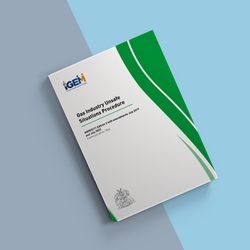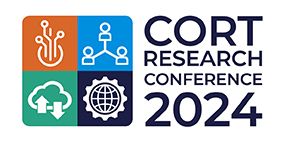IGEM/G/11 Edition 2 - Gas industry unsafe situations procedure

The update of the standard covers areas such as:
- Clarification of what to report under RIDDOR
- ID situations that are not reportable under RIDDOR
- When and how to report under RIDDOR
- How to report unsafe situations due to poor workmanship which are not RIDDOR
- Reporting of theft of gas/meter tampering/interference of an LPG vessel
- Updates to the situation tables and associated notes
- Update to visual risk assessment of gas appliances.
Introduction
1.1 This Procedure supersedes 1st Edition of IGEM/G/11 The Gas Industry Unsafe Situations Procedure (GIUSP), which is obsolete.
1.2 This Procedure has been drafted by a Panel appointed by the Institution of Gas Engineers and Managers’ (IGEM’s) Technical Coordinating Committee, subsequently approved by that Committee; the Gas Utilisation Committee, the Gas Measurement Committee and the Gas Transmission and Distribution Committee, and published by the authority of the Council of IGEM.
1.3 This Procedure is for use by Gas Safe registered businesses/engineers when dealing with unsafe situations in domestic and non-domestic premises supplied with Natural Gas or Liquefied Petroleum Gas (LPG).
1.4 In creating this version of GIUSP the Panel has used the Gas Safety (Installation and Use) Regulations GSIUR 1998 and their Approved Codes of Practice (ACoP) guidance document L56 when applying the ID and AR categories as defined in Section 6.
1.5 This Procedure makes use of the terms “must”, “shall” and “should” when prescribing particular requirements. Notwithstanding clause 1.8:
- the term “must” identifies a requirement by law in Great Britain (GB) at the time of publication
- the term “shall” prescribes a requirement which, it is intended will be complied with in full and without deviation
- the term “should” prescribes a requirement which, it is intended will be complied with unless, after prior consideration deviation is considered to be acceptable.
Such terms may have different meanings when used in Legislation, or Health and Safety Executive (HSE) ACoPs or guidance, and reference needs to be made to such statutory Legislation or official guidance for information on legal obligations.
1.6 The primary responsibility for compliance with legal duties rests with the employer. The fact that certain employees, for example “competent engineers”, are allowed to exercise their professional judgement does not allow employers to abrogate their primary responsibilities. Employers must:
- have done everything to ensure, as far as is reasonably practicable, that there are no better protective measures that can be taken other than relying on the exercise of professional judgement
- have systems and procedures in place to ensure that the exercise of professional judgement by “competent engineers” is subject to appropriate monitoring and review
- not require “competent engineers” to undertake tasks which would necessitate the exercise of professional judgement that is beyond their competence. There should be written procedures defining the extent to which “competent engineers” can exercise their judgement. When “competent engineers” are asked to undertake tasks which deviate from this, they should refer the matter for higher review.
1.7 It is now widely accepted that the majority of accidents in industry generally are in some measure, attributable to human as well as technical factors in the sense that actions by people initiated or contributed to the accidents or people might have acted better to avert them.
It is therefore necessary to give proper consideration to the management of these human factors and the control of risk. To assist in this, it is recommended that due cognisance be taken of the publication HSG48 and HSG65.
1.8 Notwithstanding clause 1.5, this Procedure does not attempt to make the use of any method or specification obligatory against the judgement of the competent engineer. Where new and better techniques are developed and proved, they should be adopted without waiting for modification of this Procedure. Amendments to this Procedure will be issued when necessary and their publication will be announced in the Journal of IGEM and other publications as appropriate.
1.9 This Procedure has been drawn up by the gas industry, in order to assist competent engineers in meeting their legal duties in accordance with the GSIUR and associated Approved Code of Practice and Guidance and correctly classify unsafe gas installations.
Note : The general principles of the Gas Industry Unsafe Situations Procedure (GIUSP) may be:
- used as a guide to action in premises which fall outside the scope of GSIUR
- used in geographical areas not covered by the GB edition of GSIUR e.g. Guernsey, Jersey, Isle of Man and Northern Ireland.
HSE supports this Procedure, which will assist the industry in maintaining a consistent approach to the risk assessment of gas installations.
This Procedure, which has also been published as Gas Safe Register Technical Bulletin (TB) 001, is in effect a ”live” document and is revised periodically as new information/guidance is developed. To ensure that you keep up-to-date with the current requirements of this Procedure visit: http://igem.org.uk/ or-https://www.gassaferegister.co.uk/sign-in/ login and visit the Technical Information area and search for the controlled (current) copy.
1.10 Requests for interpretation of this Procedure in relation to matters within its scope, but not precisely covered by the current text, are to be addressed to Technical Services, IGEM, IGEM House, 26-28 High Street, Kegworth, Derbyshire, DE74 2DA or emailed to [email protected] and will be submitted to the relevant Committee or Panel for consideration and advice, but in the context that the final responsibility is that of the engineer concerned. If any advice is given by or on behalf of IGEM, this does not relieve the competent engineer of any of his or her obligations.
1.11 This Procedure was published in 15th January 2021.
Scope
2.1 The information provided in this Procedure is relevant to all commissioned gas equipment (installations and appliances) installed in both domestic and non-domestic premises (see also Section 3.6). Based on assessed risk, it aims to provide guidance to competent engineers when dealing with various situations which currently, or may in the future affect safety.
2.2 The priority for gas engineers when encountering an unsafe situation is to safeguard life and property. It is essential that gas engineers are able to identify gas equipment which presents a danger or potential danger and take prompt corrective actions to eliminate such danger.


